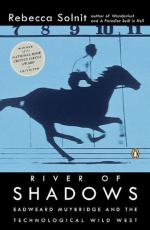|
This section contains 309 words (approx. 2 pages at 300 words per page) |
World of Invention on Eadweard James Muybridge
The son of a corn merchant, Edward James Muggeridge was born in Kingston-upon-Thames, England, on April 9, 1830. While in his twenties he changed his name and emigrated to California, where he learned photography and made important contributions to that field.
In San Francisco, Muybridge worked with photographer Carleton A. Watkins. Later the U.S. government commissioned Muybridge to conduct photographic surveys of the Pacific Coast. In the late 1860s, Muybridge's photographs of Alaska and California caught the attention of Leland Stanford, a former California governor. Stanford, who was familiar with Étienne-Jules Marey's photographs of running horses, hired Muybridge to confirm that a running horse's hooves were positioned under its body when they all simultaneously left the ground.
In 1872 Muybridge used a series of cameras to take sequential pictures of a running horse. As the horse passed each camera, it tripped a wire that set off the camera shutter. Though Muybridge maintained that one of his photographs demonstrated that Marey was correct, the quality of the photograph was poor and his proof inconclusive.
Muybridge's work was interrupted when in 1874 he was tried and acquitted of murdering his wife's lover. After several years on assignment abroad, he resumed his work in California, supported financially by Stanford. Muybridge improved the shutter mechanism of his camera so that it could take a 1/2000 of a second exposure.
In 1880 Muybridge produced the Zoopraxiscope to project photographs in rapid succession, thus creating a primitive form of motion pictures. After a three-year lecture tour in Europe, Muybridge received support for his research from the University of Pennsylvania. By 1885 he had taken more than 100,000 photographs of moving animals and humans. These images were made available in his Animals in Motion (1899) and The Human Figure (1901), which allowed scientists and artists to refine their understanding of animal movement. Muybridge died in the city of his birth on May 8, 1904.
|
This section contains 309 words (approx. 2 pages at 300 words per page) |


